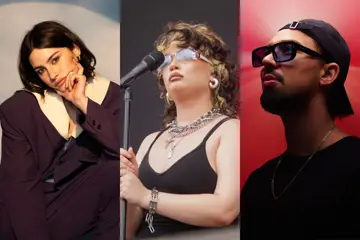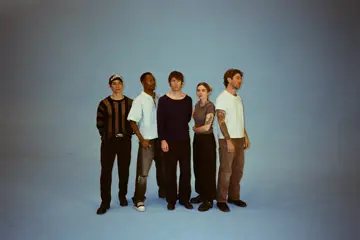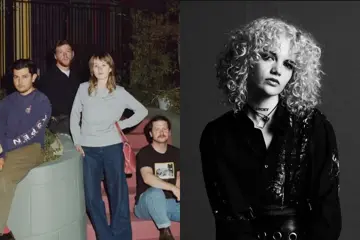As The Music reported earlier today, ARIA CEO Annabelle Herd hosted an enjoyable, informative keynote at BIGSOUND, during which she revealed that in 2026, ARIA will induct multiple acts into the Hall of Fame.
In addition to the Hall of Fame news, Herd detailed the momentum of the Australian music industry, AI, challenges faced by artists and industry figures alike, and even more, but what will likely keep conversations going following her keynote today are her ruminations on the ARIA Charts.
“For some time now, ARIA has been focusing on the Australian Artist Albums and Singles Charts,” Herd began the conversation about the ARIA Charts. How does ARIA do that? One example is sharing the Australian Artist Albums and Singles Charts at 4 pm on a Friday, an hour before sharing the main chart on social media. Plus, all follow-up videos and posts are about Australian artists.
Doubling down on the strategy to uplift Australian artists, ARIA launched the Australian Artist Charts #1 Award just four weeks ago.
“These Awards are about recognising the hard work and achievement that goes into getting to the top of the Aus charts and also giving artists another opportunity to promote their music and talk about success,” Herd explained. “At a time when it is so hard to get attention in a global marketplace, I think tools like this are more important than ever to help artists stand out.”
Don't miss a beat with our FREE daily newsletter
Pivoting to the charts themselves and recognising their controversy at times (“They’re a contentious topic,” Herd commented), she continued, “To be 100% clear – despite some recent great results, and they are great – we are fully aware of the problem we have on the ARIA main charts.
“We have spoken about it in public and at the ARIA Board and Chart Committee, and for the best part of this year, we have been looking at options around how the Charts are calculated. We are not ignoring the potential to change or evolve.”
However, Herd acknowledged that “the time and resources” needed to assess potential changes “that would benefit Australian artists are significant… I want to be really clear that it is finding the benefit to Australian artists that’s what’s important here.”
Addressing the suggestions ARIA receive about what could be changed, Herd said, “At the end of the day, no one knows if any of that would actually help. There are also different views in the industry, particularly around the weighting of physical versus streaming.”
After months of modelling the changes in the New Zealand chart, ARIA is currently modelling the UK chart rules to discover their impact but remains open to suggestions.
“We are open to looking at other practical suggestions, and we are looking at some others ourselves to see what is feasible and will have an impact, but it will take time to get right, and we won’t make changes unless they move us forward,” Herd said. “We also have to ensure that our Charts are rigorous and broadly consistent with international standards, as they currently are. The key to understand, though, is we are working toward positive change; we just have to get it right.
“The Charts are very important - both as the only comprehensive data source in Australia - and as a marketing tool for music. But they are neither the cause of nor the solution to the current situation. I recognise that they are a punching bag, and I get the frustration. That is fine. But for those who are keen to engage, we need to be realistic about what changing the Charts can actually achieve.”
















